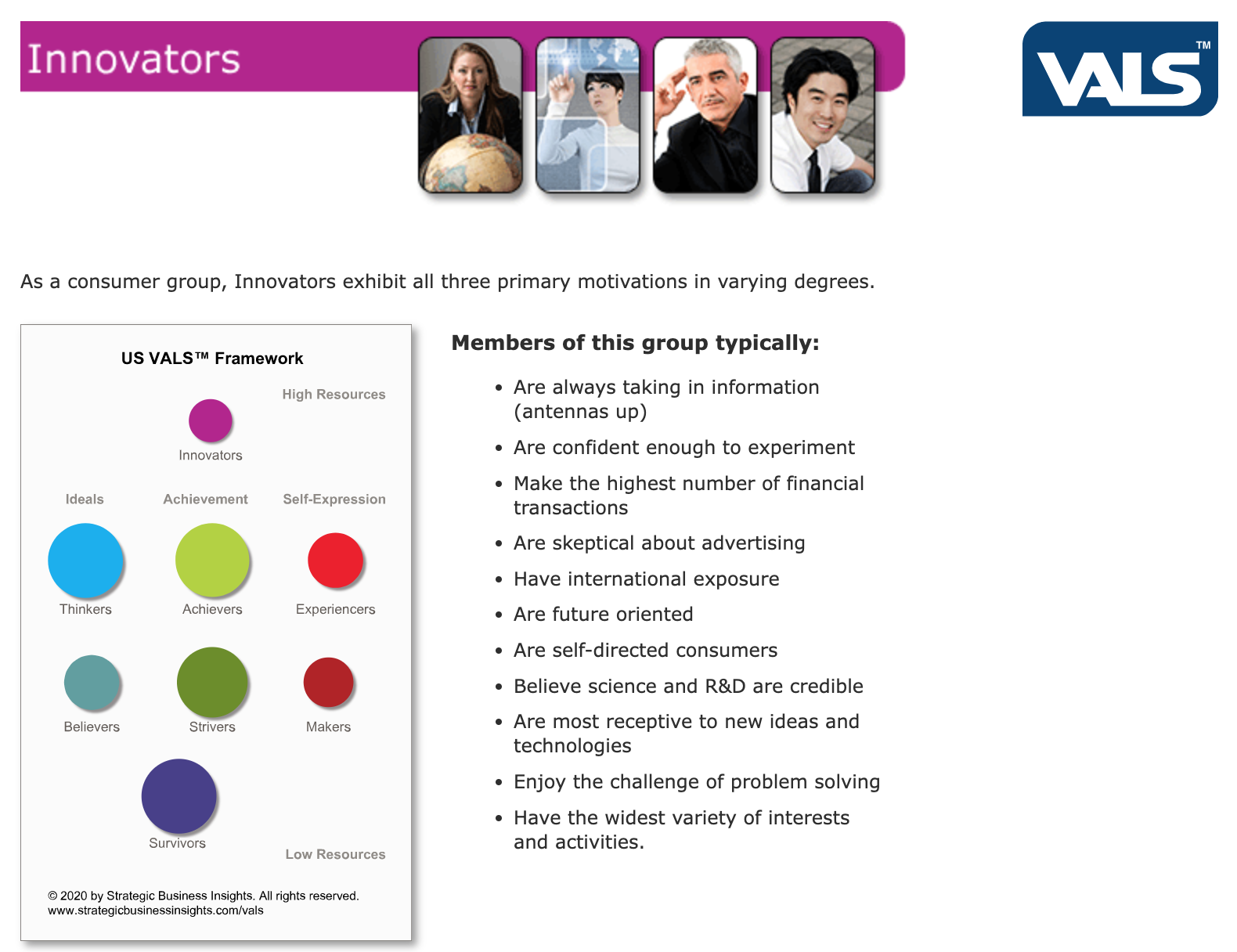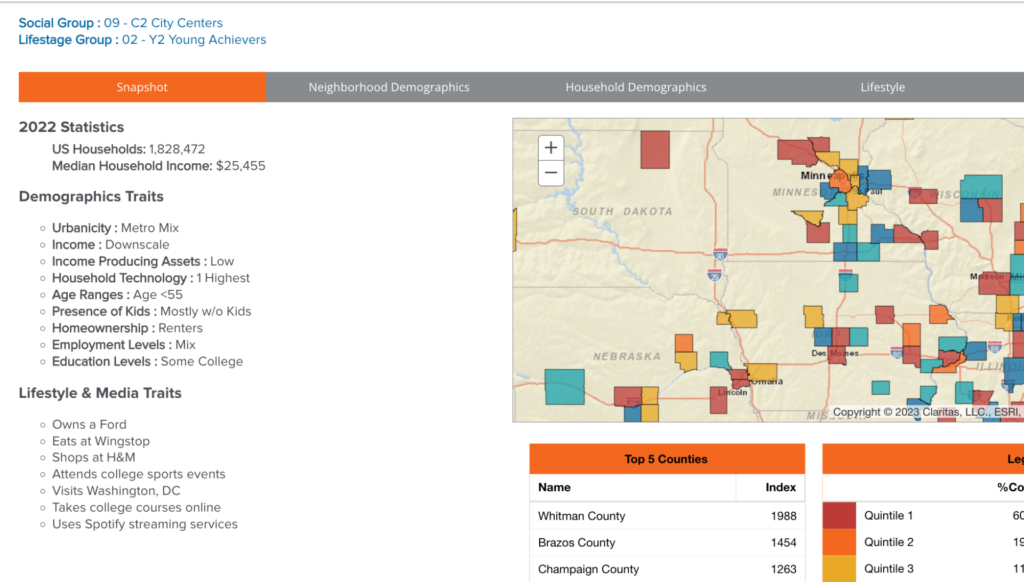Understanding Consumer Influence: Personality, Lifestyle, and Self-Concept

How would you describe yourself? And how often do we let that influence what we buy?
This question has stuck with me after reading the chapter. How do one’s personality, lifestyle, and self-concept influence what consumers purchase? How can we use this information as marketers to influence consumers buying decisions? Today, we will define personality, lifestyle, and self-concept behaviors, discuss how VALS and PRIZM can be used to give insights into how consumers purchasing patterns are influenced and discuss my results from those two assessments.
Personality
Personality is the thoughts, emotions, intentions, and behaviors of adapting to an environment. Personality can be further explained by traits. Marketers can use personality and characteristics to influence consumers to purchase products that align with their consumer personality. In addition, marketers can assign a personality to the brand, which will help consumers identify and build strong relationships with the brand. Before, marketers relied on psychoanalytic tools like focus groups and depth interviews to understand the needs and motivations of the consumer. Still, now, marketers can use single-trait or multiple-trait approaches to know how they can affect consumer behavior decisions.
Lifestyle
Lifestyle and personality are closely related. Lifestyle can also be context-specific personality traits and influence purchasing patterns. The consumer’s lifestyle can heavily influence their buying behaviors. When creating a market segmentation, marketers will use psychographics to help understand consumers’ personalities, values, activities, and attitudes that can influence their purchasing decisions. Demographics also play a role in market segmentation and consumer purchasing patterns.
Self-Concept
In consumer behavior, self-concept is how consumers feel and think about themselves. This can influence consumers to purchase products that reflect how:
- They view themselves (actual self)
- They want to be perceived (ideal self)
- They want others to view them (social self)
Consumers will purchase products that tend to give a positive self-image, allow for self-expression, and help form perceptions about themselves (extended self). Therefore, marketers can promote products based on how they think a consumer will identify with the product and the outcome the product will produce in value to the consumer.
Using VALS & PRIZM
The best way marketers can use this information is to create market segmentation. Market segmentation, demographics, and psychographics create subsets of consumers with similar characteristics and purchasing patterns. Tools that marketers can use to understand consumers and their buying behaviors are VALS and PRIZM tools.
VALS
VALS has eight segments that consumers can fit into based on the resources and motivations of the consumers.
Marketers can use VALS to:
- Find your audience
- Position the brand
- Communicate the brand’s personality
When I took the VALS assessment, my first group was Innovators, and my second group was Experiencers. Marketers can look at my results and understand how I make decisions and my consumer type. From this assessment, they can tell that I am/have:
- Self-directed in the kinds of services I need
- Skeptical about advertising
- Confident in experimenting and trying new things and technologies
- Capable of problem-solving
- A wide variety of interests and activities

PRIZM
PRIZM is a market segment based on behavior and demographic information. Therefore, it can be used to find patterns in a specific region.
The PRIZM segment that I identified with was Striving Selfies. They are segmented as follows:
- Lifestage group Y2- Young Achievers
- Social group C2- City Centers
- <55 years old
- Mostly w/o kids
- Renters
- Owns a Ford
- Uses Spotify
- Takes college courses online
- Visits Washington, DC
This tool is helpful to help identify the market segments in specific locations. The segment I identified with was also in the La Crosse area. These segments break down demographic traits such as income, age, employment, and homeownership. They also include lifestyle traits like:
- Where they shop and eat
- What streaming services do they use
- Where they vacation or travel
- What they enjoy for entertainment
- What type of social media do they use
- How do they receive information
This is an excellent breakdown of information to help better understand the segments surrounding businesses in a specific area. This can help marketers determine how they need to communicate and promote the brand; they can also influence purchase decisions based on items these segments have already purchased.

Conclusion
Many factors can influence a consumer’s purchasing decision. Therefore, it is essential to understand how personality, lifestyle, and self-concept influence consumers and how to utilize that understanding to create effective marketing strategies for products and services.